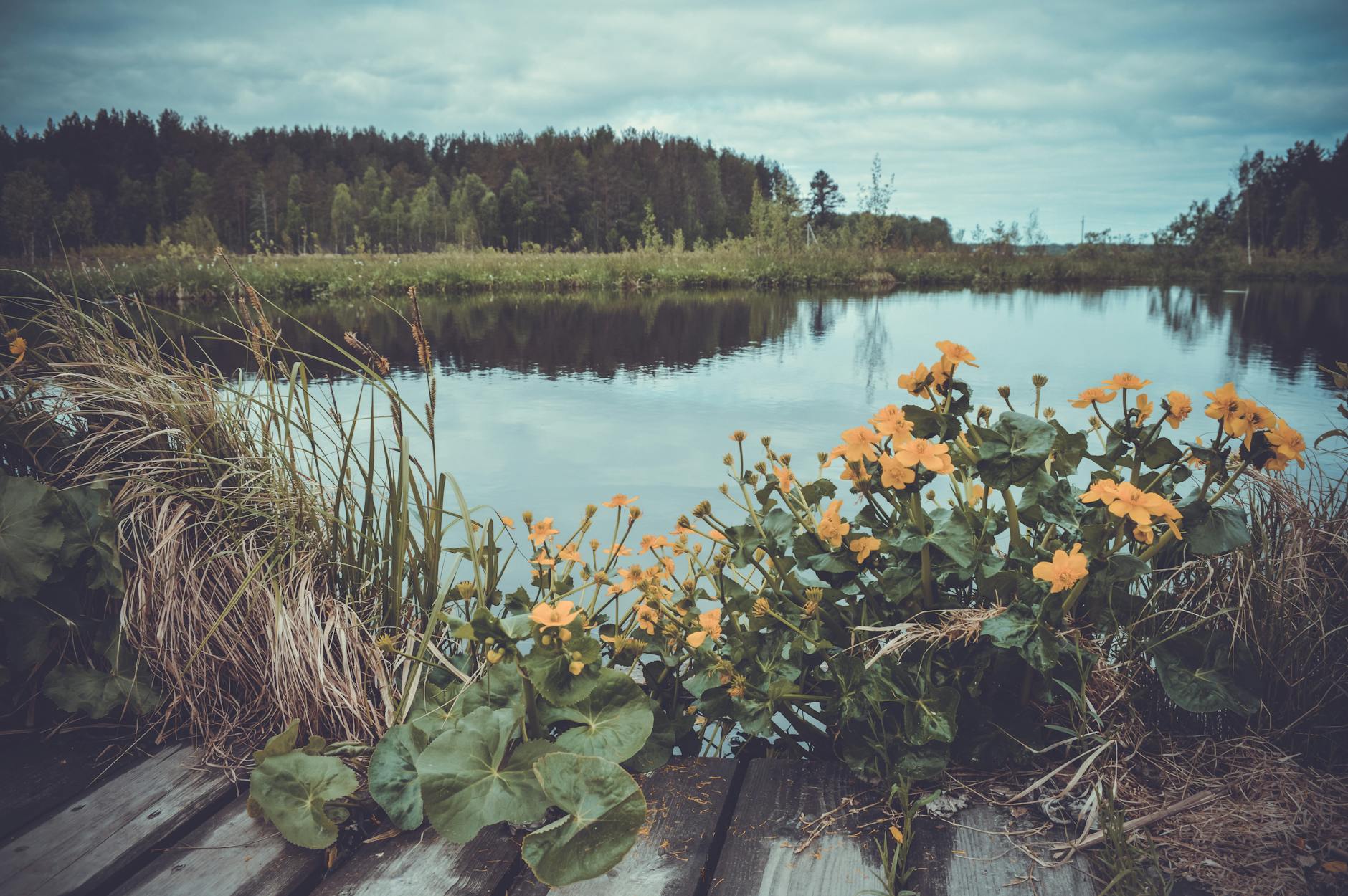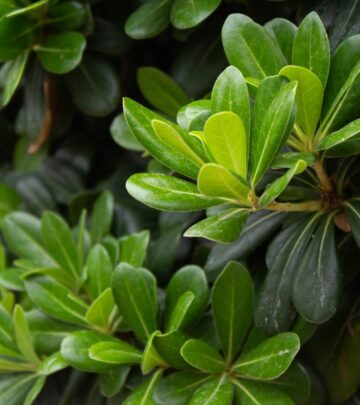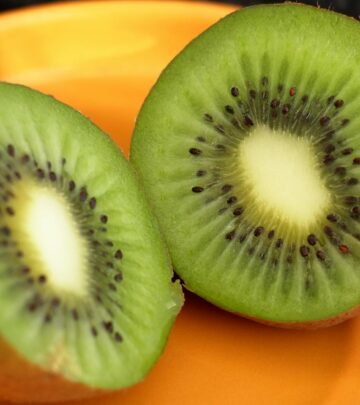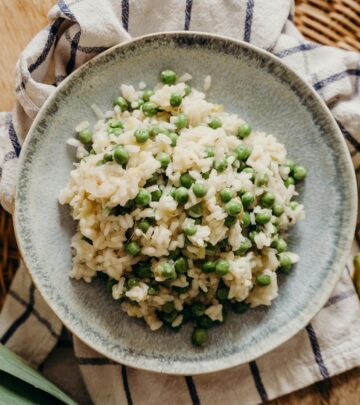Marsh Marigold Planting Guide: Grow Caltha palustris for Wetland Beauty
Bright yellow blooms enliven damp corners while nourishing early emerging pollinators.

Marsh Marigold Planting Guide: Caltha palustris for Wet Edges
Marsh marigold (Caltha palustris) is a dazzling, cold-hardy spring bloomer perfectly adapted for gardeners seeking to enliven damp spots, pond edges, rain gardens, and other water-logged corners of their landscapes. As a native plant, marsh marigold supports biodiversity and offers an outstanding alternative to invasive lookalikes. This guide will help you successfully cultivate marsh marigolds for an abundant, low-maintenance, and pollinator-friendly display.
Table of Contents
- About Marsh Marigold
- Natural Habitat and Range
- Distinguishing Marsh Marigold from Lookalikes
- Benefits of Growing Marsh Marigold
- Planting Caltha palustris
- Site and Soil Requirements
- Care and Maintenance
- Propagation Techniques
- Landscape Uses and Design Tips
- Wildlife and Ecological Value
- Common Problems and Solutions
- Frequently Asked Questions
About Marsh Marigold
Marsh marigold is a striking perennial herb, renowned for its early-spring flush of glossy, golden-yellow flowers. It is not a true marigold, but rather a member of the buttercup family (Ranunculaceae), introducing lush greenery and vibrant color long before most garden perennials awaken.
- Scientific name: Caltha palustris
- Common names: Marsh marigold, kingcup, cow slip, yellow marsh marigold
- Type: Herbaceous, rhizomatous perennial
- Height & width: 12–18 inches (30–45 cm) tall and wide
- Lifespan: Long-lived in suitable wet conditions
Natural Habitat and Range
Marsh marigold has an extensive circumboreal distribution, native to wet, cool regions across Europe, Asia, and North America. Its natural haunts include:
- Marshes and wet meadows
- Bogs, fens, and floodplains
- Edges of streams, ponds, and lakes
- Low woodlands with standing water in spring
In North America it grows from Newfoundland west to Alaska and the Pacific coast, stretching south along mountain chains, thriving especially in areas with cold, wet soils. In some regions it forms large colonies where moisture is abundant and undisturbed.
Distinguishing Marsh Marigold from Lookalikes
An important consideration is distinguishing marsh marigold from invasive, similar-looking species. The most notable impostor is lesser celandine (Ficaria verna), which is aggressive and damaging to native wildflower habitats.
| Feature | Marsh Marigold (Caltha palustris) | Lesser Celandine (Ficaria verna) |
|---|---|---|
| Leaves | Large, rounded, heart- or kidney-shaped, thick, glossy, and waxy | Smaller, thinner, often with a silvery sheen |
| Flowers | 5–9 petal-like sepals, bright yellow, roughly 1–2 inches across, buttercup-like | 8–12 narrow petals, less uniform, shinier yellow, typically smaller |
| Bloom time | March–May (mid-spring to early summer) | Late winter to early spring |
| Roots | Rhizomes (thick, horizontal) | Tubers (many small, easy to spread) |
| Spread | Colonizes slowly by rhizomes or seeds | Spreads rapidly by tubers and seed, invasive |
Tip: Choose Caltha palustris for your garden to support native wildlife and avoid aggressive spread. Lesser celandine should be removed or replaced, especially near wild areas.
Benefits of Growing Marsh Marigold
Marsh marigold is more than just a beautiful addition to wet landscapes. Its key benefits include:
- Highly ornamental—bright yellow flowers in early spring add seasonal excitement.
- Lush foliage creates an attractive groundcover well into summer.
- Deer resistant—mature leaves contain toxins, making them unpalatable to browsing animals.
- Water stabilization for pond, stream, or riverbanks, reducing erosion.
- Pollinator friendly—nectar and pollen attract bees and early pollinators.
- Native alternative to invasive yellow flag iris (Iris pseudacorus) and lesser celandine.
- Extremely cold hardy—thrives in USDA zones 1–8.
Planting Caltha palustris
Marsh marigold adapts best to areas where moisture is consistent and flooding is possible, but it will also grow in rain gardens and low-lying spots that may dry out after spring. Proper planting ensures a thriving, self-sustaining colony.
- Best planting time: Early spring or fall for bare root plants; container-grown plants can be planted throughout the growing season with sufficient water.
- Planting depth: Rhizomes should rest at or just below soil level. Marsh marigolds can tolerate shallow submersion (up to 4” of water depth).
- Spacing: Allow 12–18 inches between plants for clumps to fill in naturally.
- Pond plantings: Use mesh baskets or pond bags for lined ponds to keep roots contained and aerated.
Site and Soil Requirements
Choose a site with:
- Full sun for maximum blooms; part shade is suitable in southern locations to prevent summer dormancy.
- Soil: Rich, organic, consistently moist or wet soil. Marsh marigolds tolerate clay, provided it remains waterlogged or does not dry out.
- Water depth: Up to 4 inches of shallow submersion in ponds or bogs.
Key microhabitats:
- Muddy pond/stream edges
- Bog gardens
- Low, flood-prone woodland swales
- Rain gardens or damp depressions
Note: Marsh marigolds may go dormant in hot, dry midsummer, returning the following spring.
Care and Maintenance
Marsh marigold is easy to care for when its needs are met:
- Moisture: Never allow the soil to dry out for long; water regularly during dry spells, especially in spring.
- Mulch: Mulch with leaf mold or compost to retain moisture and enrich soil.
- Fertilizer: Not required in rich, organic soils; a spring or fall application of compost is sufficient.
- Pruning: Remove faded flower stalks and dying leaves in summer; foliage will naturally yellow as plants go dormant.
In favorable sites, marsh marigold will multiply without special attention, gently filling available damp spaces.
Propagation Techniques
You can increase your marsh marigold patch by:
- Division: The easiest method. Divide clumps in early spring or fall, ensuring each piece has healthy roots and shoots.
- Seed: Harvest mature seed pods as they split; sow immediately in moist, rich soil. Germination may occur the following spring.
Important: Never dig up wild plants. Collect only seed or use nursery-propagated plants to help support wild populations.
Landscape Uses and Design Tips
Marsh marigold provides seasonal and ecological interest in the following settings:
- Pond and stream edges: Plant in clumps for a naturalized effect; they anchor soil and prevent erosion.
- Rain gardens: Combine with other natives that can tolerate spring wet and summer dry spells.
- Bog or fen gardens: Interplant with sedges, iris, and pitcher plants.
- Damp woodland gardens: Spread among ferns and early bulbs in shaded, low-lying spots.
Design note: Marsh marigold’s bold texture and bright flowers contrast beautifully with fine-leaved companions and the cool green hues of mosses and ferns.
Wildlife and Ecological Value
- Pollinator attractor: Supports bees, flies, and early spring insects with nectar and pollen.
- Amphibian nurseries: Clumps provide cover for frogs and salamanders at water’s edge.
- Bank stabilizer: Roots reduce erosion along moving water.
- Part of native wetland communities: A valuable element of healthy aquatic ecosystems.
Common Problems and Solutions
Marsh marigold is generally trouble-free, but these tips help avoid setbacks:
- Foliage collapse in summer: Typical in hot climates if soil dries—water well or add mulch. New foliage emerges the following spring.
- Root rot: Uncommon except in stagnant water without oxygen exchange—plant in areas with mild water movement or periodically refreshed water.
- Pests: Virtually pest-free; deer rarely graze due to toxins in mature leaves.
- Slugs/snails: Can be minor nuisances; hand-pick or use barriers if necessary.
Frequently Asked Questions (FAQs)
Q: Can marsh marigold grow in regular garden soil?
A: Marsh marigold thrives best in soils that remain moist or soggy, such as pond margins, bogs, or low-lying garden spots. It does not perform well in ordinary, dry garden soil and may go dormant or fail to flower in drought conditions.
Q: Is marsh marigold invasive?
A: No, marsh marigold (Caltha palustris) is not considered invasive. It naturalizes slowly by rhizomes or seeds, filling available wet areas without overwhelming surrounding vegetation. Its cousin, lesser celandine (Ficaria verna), is invasive and should be avoided.
Q: Can I plant marsh marigold in containers?
A: Yes—marsh marigold can be grown in mesh baskets or aquatic plant bags and placed at the edge of lined ponds or in large, water-holding containers. Be sure to keep the soil or medium constantly wet or shallowly submerged.
Q: Are marsh marigold flowers edible?
A: While young leaves and flower buds were historically cooked and eaten in some cultures, all parts contain toxins if raw. Consumption is not recommended; enjoy marsh marigold for ornamental and ecological value.
Q: When is the best time to divide marsh marigold?
A: Divide marsh marigold in early spring or early fall, when soil is moist and temperatures are moderate. Replant divisions at the same soil level and water thoroughly.
Final Tips for Success
- Never collect marsh marigolds from the wild; use nursery-raised plants or seeds to help preserve native populations.
- Combine with other moisture-loving natives for a diverse and resilient water garden.
- Patience is key: allow a season for new transplants to settle before expecting strong bloom displays.
References
Read full bio of Anjali Sayee
















Community Experiences
Join the conversation and become a part of our empowering community! Share your stories, experiences, and insights to connect with other beauty, lifestyle, and health enthusiasts.